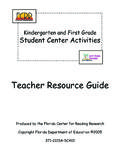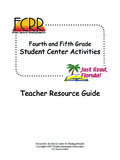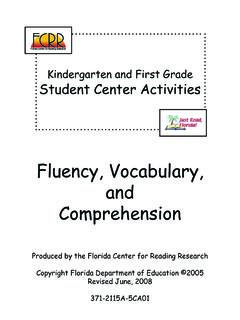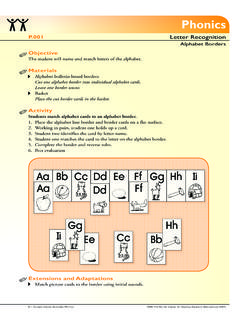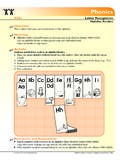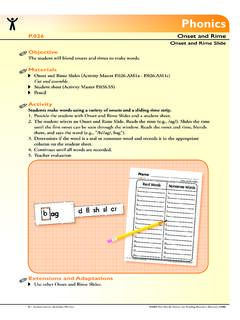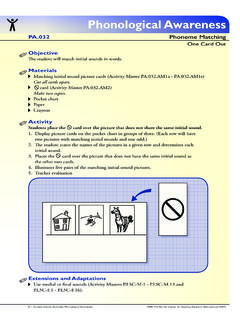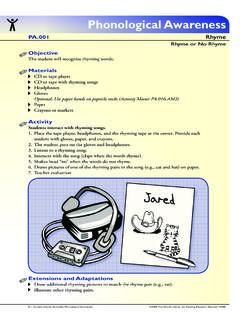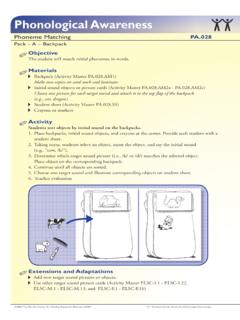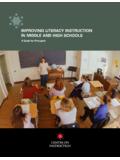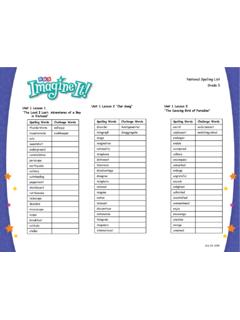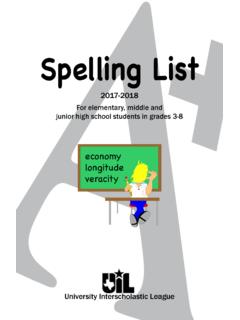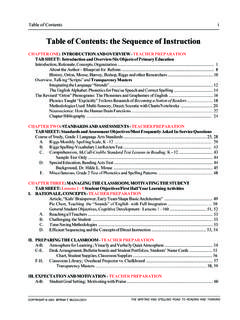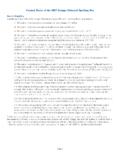Transcription of Word Work Strategies to Develop Decoding Skills …
1 Word Work Strategies to Develop Decoding Skills for Beginning Readers Roxanne Hudson, Florida Center for Reading Research Florida State University Reading first Summer Institute 2005. Many thanks to . Paige Pullen, University of Virginia Holly B. Lane, University of Florida Lynda Hayes, University of Florida Alphabetic Principle Children must Develop the fundamental insight that letters and sounds work together in systematic ways to form words. This understanding provides the foundation for the development of Decoding Skills .
2 Less Skilled Readers Rely heavily on context and guessing Read slowly and with great effort Focus on Decoding rather than comprehending Skip challenging words and sections of text Do not monitor their reading to make sure it makes sense. More Skilled Readers Read a word letter by letter Process words automatically and rapidly Look for known word parts in unfamiliar words Use context to confirm pronunciation and meaning. Ehri's Phases of Word Recognition Ability Pre-alphabetic phase Partial alphabetic phase Full alphabetic phase Consolidated alphabetic phase Automatic Phase Word study activities promote.
3 Development of phonological awareness understanding of the alphabetic principle Goals of a Word Study Curriculum Students should .. Know about the features of print. Know a large core of high-frequency words. Understand simple and complex letter-sound relationships. Notice and use patterns in words (how words sound, look, and mean). Use a repertoire of word-solving Strategies . Use references, resources, and proofreading. (Pinnell & Fountas, 1998). Phonics Instruction Phonics instruction provided in a meaningful context that provides multiple anchors to help students learn about words: meaning, spelling, and sound.
4 Teaching letter-sound relationships is critical, but we should not neglect the equally important role of vocabulary and meaning. Juel, Biancaroasa, Coker, & Deffes (2003). Phonics Instruction 9 need not extend beyond second grade for most children 9 should Develop both word reading accuracy and automaticity 9 most effective when it is explicit and systematic connected with a meaningful context 9 should begin with the easiest individual sounds and progress to more complex orthographic patterns Phonics Instruction Instruction must be explicit and systematic Explicit means.
5 Letter sound relationships are taught in isolation Blended into whole words Practiced in decodable text Phonics Instruction Instruction must be explicit and systematic Systematic means . Initially introducing the most common sounds for a new letter Most useful letter sounds first Letter sounds that are easier to blend ( , continuous). Progress from simple to more complex Separate confusing letters and sounds Common Confusions Visual Similarity Auditory b, d Similarity b, p /f/, /v/. m, n /t/, /d/.
6 Q, p /b/, /d/. /i/, /e/. /o/, /u/. Phonograms Phonogram--a series of letters that stands for a sound, syllable, syllable part, or series of sounds. Word families - ay as in say and play Rime - linguistic term referring to a phonogram Needed for more advanced, automatic word recognition (Ehri, 2002). Use only after having taught individual sounds Phonogram knowledge should build on systematic, explicit phonics instruction Phonograms Phonograms are useful during spelling Word patterns are effective for teaching spelling student's literature contain many of the most common phonograms Recognizing word patterns or chunks is valuable in developing reading fluency-- analyzing by analogy Phonograms are helpful with multisyllabic words What does research say about word work?
7 A review of two studies . Study 1: A study examining word work with manipulative letters. Study 2: A comparison of two types of phonics whole-class first grade instruction on spelling and word identification. Study 1: Alphabetic Word Work with Manipulative Letters and Reading Acquisition of Struggling first - grade Students Setting and Participants Nine school sites in two Florida school districts 98 first - grade students struggling to acquire reading Skills Randomly assigned to three groups Materials Rigby PM Story Books (Levels 1-10).
8 Solid white manipulative letters Pre-designed lessons Pullen, 2002. Intervention Description Treatment Lesson Comparison Lesson Step 1 Introduce the Step 1 Introduce the book book Step 2 Coach students Step 2 Coach students through the book through the book Step 3 Alphabetic Step 3 Omitted word work with Step 4 Reread the book manipulative letters Step 4 Reread the book Decoding CVC. Nonwords 18. 16. 14. 12. Control 10. 8. Comparison Treatment Decoding CVC. 6. 4. Words 60. 2. 0 50. Pretest Posttest 40.
9 Control 30 Comparison Treatment 20. 10. 0. Pretest Posttest Study 2: Using Word Boxes as a Large Group Phonics Approach in a first grade Classroom 48 participants in first grade Randomly assigned to phonics instruction using word boxes or traditional methods 20 minutes a day for 4 weeks with approximately 5 words per lesson taught by same teacher to both groups Pre-test and Post-test on spelling and word identification on taught words and transfer of Skills to untaught words Joseph, 2000. Study 3: Word Boxes Condition Materials for each student (ziploc bag): laminated word box divided into three sections.
10 Laminated small printed alphabet cards;. small colored chips;. magic markers tissue to clean board Procedures: Step 1: Segmenting Sounds Step 2: Letter-to-Sound Matching Step 3: Spelling Each step consists of teacher modeling, guided practice, and independent practice Study 3: Traditional Phonics Condition Procedures: Step 1: Choral reading of words in list Step 2: Letter-sound correspondences taught by teacher by underlining each letter, naming the letter, and saying its sound in sequential order.
